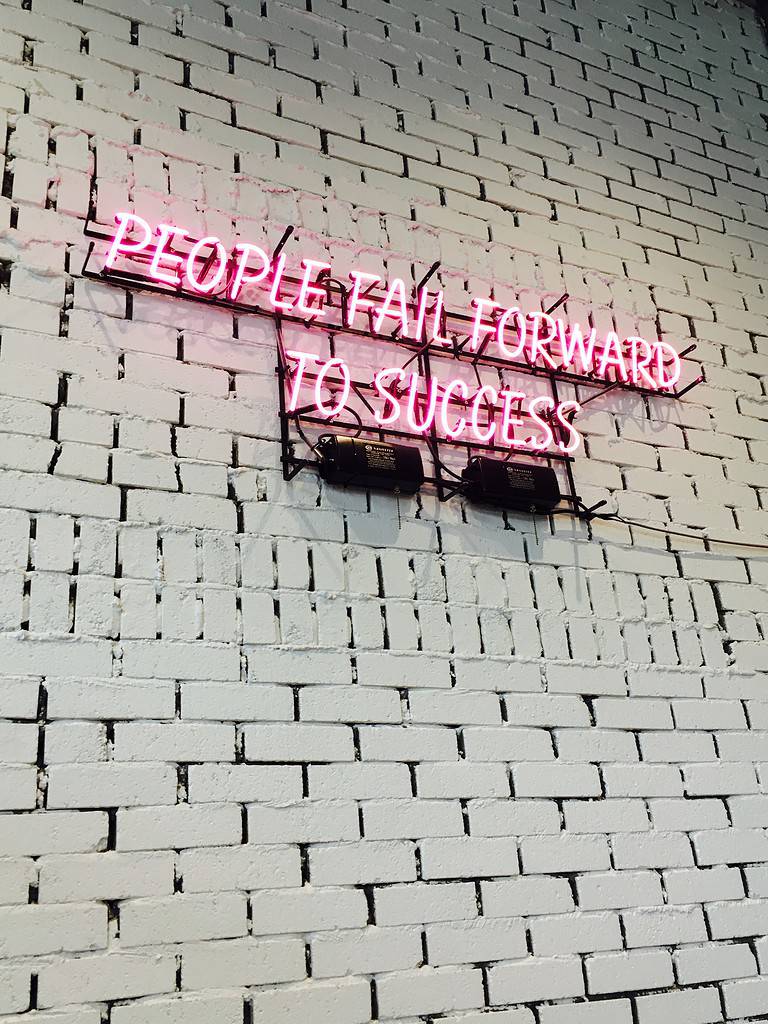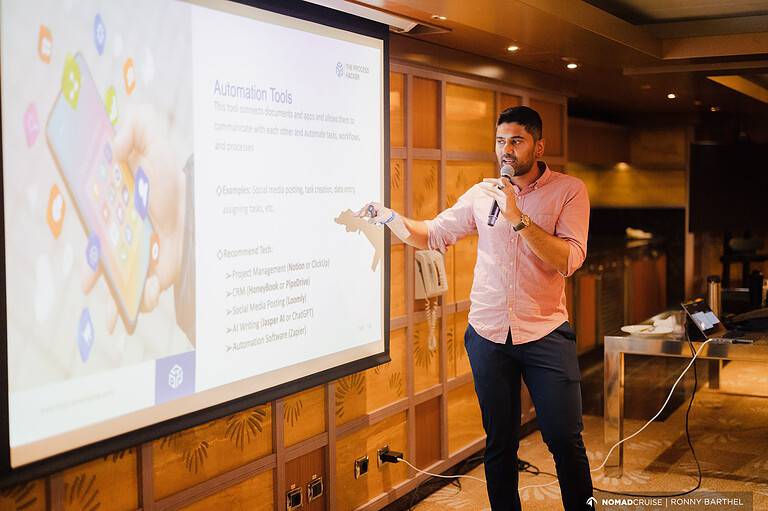How to Conduct a Capability Gap Analysis
Are you stuck in your professional growth or noticing your team isn’t reaching its full potential? It can be frustrating to see untapped potential.
The problem might be a capability gap – a mismatch between what you want to achieve your goals and your current skills and resources.
Imagine closing that gap with a clear plan for developing the skills or acquiring the tools to overcome those limits. And, you can do a capability gap analysis to make it happen.
Ready to get started? Let’s discuss how to conduct a thorough Capability Gap Analysis!
What are Capability Gaps?
A capability gap is the difference between an individual’s or an organization’s current skills, resources, and processes and those required to achieve their desired goals. It’s crucial to highlight areas where development or change is needed to meet their strategic objectives.
Why You Need to Conduct Gap Analyses
Staying ahead in today’s fast-paced market means continuously aligning your strategies with your operational capabilities. Conducting a Capability Gap Analysis is not only crucial for survival but also one of the keys to thriving.
Here are the top reasons why you need to conduct one:
- Targeted Improvement: Pinpoint specific areas that require enhancement to meet your strategic objectives.
- Resource Optimization: Efficiently allocate resources more efficiently by focusing on areas needing attention.
- Competitive Advantage: Stay ahead of competitors by continuously updating and upgrading your capabilities.
- Enhanced Decision Making: Make informed decisions based on a comprehensive understanding of your organization’s capabilities.
Introducing a structured Capability Gap Analysis into your strategic planning is the best way to ensure you’re keeping up and setting the pace in your industry. This method doesn’t just identify capability gaps—it offers a clear path to bridging them, turning potential weaknesses into areas of strength and opportunity.
A detailed, step-by-step approach ensures that every aspect of your organization is primed for success, tailored to your unique goals and challenges.
How to Conduct a Strategic Gap Analysis
This unique process systematically breaks down your aspirations into actionable insights and tasks. It’s about assessing your current capabilities, determining necessary upgrades, and implementing strategic changes.
- Cast Your Vision: Define your organization’s long-term strategic goals.
- Audit Your Current State: Evaluate your existing capabilities without bias.
- Define Your Desired State: Clearly articulate where you want to be regarding capabilities.
- Identify the Gap: Identify the discrepancies between current and desired states.
- Set Priorities: Rank the identified gaps based on their impact on your goals.
- Brainstorm Solutions: Generate ideas for how to bridge these gaps.
- Create a Business Strategy: Develop specific, measurable, achievable action items.
- Allocate Resources: Decide where to allocate budgets and resources.
- Start Taking Action: Begin executing the action plans.
- Review and Adjust: Continuously monitor progress and make adjustments as needed.
You’re now on the brink of transforming strategic insights into concrete results. Continue reading to walk through each step, ensuring that your Strategic Gap Analysis identifies gaps and effectively closes them, propelling your business toward achieving its goals.
#1) Cast Your Vision
Before figuring out how to bridge a gap, you must know where you’re going. This first step is about crafting a crystal-clear picture of your ideal future.
Clarifying your vision is the process of defining your organization’s future success. It involves setting clear, ambitious, achievable goals aligning with your mission and values.
Here’s how to do it:
- Dream Big: Allow yourself to think beyond the immediate and the obvious. What does the ultimate success look like for you or your organization? There are no limits at this stage.
- Write It Down: Articulate your vision in writing. This makes it tangible and constantly reminds you of your aim. Be as specific as possible — details matter.
- Visualize Success: Visual tools like vision boards or diagrams represent your goals. Seeing your destination can be incredibly motivating and clarifying.
- Communicate Your Vision: If you’re working with a team, share this vision in a way that excites and inspires. Everyone must understand and align with this shared destination.
This step sets the stage for everything that follows. It’s not just about setting goals; it’s about igniting passion for the possibilities.
With a clear and compelling vision, you’re ready to chart the course from the current reality to your envisioned future.
#2) Audit Your Current State
You can only map a route by knowing your starting point. It’s time for a brutally honest assessment of where you stand right now regarding skills, technology, and processes.
Auditing your current state is taking inventory of where you are. This step is crucial because it lays the groundwork for understanding the distance between your current reality and your envisioned future.
To carry out this audit, you must:
- Collect information that gives insight into your current capabilities. This could involve financial records, performance metrics, skill assessments, or other relevant data.
- Examine how things are done, both personally and within your organization. Identify what’s working well and what isn’t.
- Evaluate available resources, including time, money, personnel, and technology. Understanding your assets and limitations is key.
- If possible, compare your current state to industry standards or competitors. This can highlight areas of strength and potential gaps.
- Listen to feedback from colleagues, clients, or personal contacts. External perspectives can provide invaluable insights into areas you might overlook.
Executing this audit requires honesty and objectivity. It’s about confronting the uncomfortable truths as much as it’s about acknowledging your strengths.
Remember, the goal here isn’t to criticize or assign blame; it’s to establish a clear and accurate baseline from which to grow.
#3) Define Your Desired State
Now that you’ve assessed your current situation, it’s time to define your desired course. This means revisiting your big-picture vision and translating it into specific, measurable goals.
Get specific! If your vision was to “expand market share,” define that in detail. Put all your goals in writing or vision board, whether they mean a 20% increase or reaching a new geographic area.
Next, consider the skills and resources essential to reaching this desired state. What new abilities does your team need, and what tools or technology could make this transformation possible?
Finally, set timelines. When do you realistically want to achieve these goals?
#4) Identify Your Gaps
After setting your sights on where you want to be, it’s time to confront the gaps between your current state and your desired future. Gap identification is about pinpointing these differences clearly and structure.
Start by placing your strategic alignment alongside your current state assessment to identify where they diverge—these discrepancies are your gaps. It’s important to categorize these gaps to tackle them more effectively. You might find that some gaps are related to skills, others to resources, or perhaps to processes.
Whenever possible, quantify these gaps. For instance, if your objective is to boost revenue by 20%, but projections show only a 10% increase, your gap quantitatively is the missing 10%.
Dive deeper to understand the reasons behind these gaps; is it due to a lack of expertise, outdated technology, or other factors? Recognizing the root causes is crucial for effective resolution.
Don’t hesitate to consult with your team members, mentors, or industry peers. Fresh perspectives can illuminate gaps that you may have overlooked.
Engaging others broadens your understanding and enhances the thoroughness of your gap analysis, ensuring no stone is left unturned in your strategic planning.
#5) Set Priorities
Not all gaps have an equal impact on your goals. That’s why setting priorities is important. You can ask these questions:
- Which gaps, if closed, will have the most significant impact on achieving those goals?
- Are some gaps time-sensitive?
- Should certain issues be addressed quickly to prevent critical problems or seize a competitive edge?
- Can some gaps be closed with smaller, faster actions?
Factor in the time, money, and people required to close each gap. You’ll likely need to focus on the most achievable wins initially. Knowing this can create momentum and build confidence in your performance improvement process.
Remember: Prioritization isn’t set in stone – be willing to adjust as circumstances change.
#6) Brainstorm Solutions
This is where creativity meets strategy. Open the floor for all sorts of ideas on how to bridge these identified gaps. Remember, at this stage, no suggestion is too bold or unconventional.
Whether you’re flying solo or part of a team, encourage divergent thinking to uncover unique solutions. This process isn’t just about finding the right answers; it’s about challenging assumptions and fostering an innovative mindset to help devise strategies.
#7) Create a Business Strategy
This phase transforms brainstormed ideas into a structured roadmap. It’s time to prioritize the solutions based on impact and feasibility, assigning clear timelines and responsibilities for each action item.
Consider this plan your blueprint; it outlines the who, what, when, and how of bridging the gaps between your current state and desired future.
Be realistic in your planning, ensuring each step is actionable and aligned with your overall goals. By doing so, you’re not just dreaming about success—you’re actively plotting the course to achieve it.
#8) Allocate Resources
Once your action plan is in place, the focus shifts to resource allocation. This crucial step ensures you have the tools, time, and talent to bring your plan to life.
Start by identifying what resources each action item requires, then assess what’s already available and what needs to be sourced. It’s a balancing act—allocating resources wisely to maximize efficiency without stretching your capabilities too thin.
Remember, effective resource allocation is as much about leveraging what you have as it is about filling in the gaps.
By thoughtfully assigning resources to each task, you’re setting the stage for a smoother transition from planning to execution, inching closer to your strategic objectives with every move.
Step 9: Start Taking Action
With your resources aligned and ready, it’s time to start taking action on the strategy. This is where your planning meets action.
Begin by clearly communicating the plan’s details to everyone involved, ensuring all team members understand their roles and expectations.
Establish a strong start by immediately prioritizing tasks to generate quick wins, boosting morale and momentum. Setting up a system for monitoring progress and handling challenges as they arise is also essential.
Remember, the kickoff is just the beginning of a dynamic process. Stay flexible, responsive, and committed to navigating through the ups and downs with your eyes fixed on the goals ahead.
Step 10: Review and Adjust
After setting your implementation in motion, the next vital step is to review and adjust as needed. This stage requires you to assess the progress against your planned objectives regularly.
Gather data, solicit feedback from your team, and evaluate outcomes with an open mind. It’s crucial to recognize that no plan is set in stone; be ready to tweak and refine your approach based on real-world results.
Adjusting your personal or business strategy in response to new insights ensures that you remain agile and responsive to opportunities and challenges. Through this iterative review and adjustment process, you continually steer your efforts closer to achieving your strategic goals, demonstrating resilience and adaptability on your path to success.
Key Considerations For A Successful Gap Analysis
Here are a few key insights for a successful capability gap analysis:
- Change is the constant: Your business and the broader market always evolve. A gap analysis isn’t a one-time event. Regularly revisiting your findings keeps your strategies aligned with new challenges and opportunities.
- Involve your team: Get input from people across your organization. Their on-the-ground knowledge to improve business processes and pain points will add a valuable dimension to your analysis. Their involvement also creates buy-in for later change implementation.
- Celebrate progress: Closing gaps is hard work! Acknowledge milestones and successes along the way. This keeps motivation high and reinforces the value of your gap analysis process.
Taking it to the Next Level: How to Close the Capability Gap
Closing capability gaps takes determination and the right approach.
You’ve identified your capability gaps—now what? The next crucial step is to transform those findings into real-world improvement.
Here are the following steps to take:
- Dig into root causes: Don’t just treat the symptoms of a gap; uncover its underlying cause. Are processes outdated? Is training lacking? Is technology holding you back? Addressing the core issue prevents the gap from recurring.
- Look beyond yourself: Benchmark against top performers in your industry or even in other fields. What are they doing differently? Adapting best practices can be a shortcut to closing your own gaps.
- Make it a habit: Build a culture of continuous improvement in which identifying and addressing gaps becomes part of your organization’s operations. This will create an agile mindset and position you for long-term success.
Alternatives Techniques to Identifying Capability Gap
Here are a few alternative techniques to consider alongside the main gap analysis process:
- SWOT Analysis: It involves evaluating your Strengths, Weaknesses, Opportunities, and Threats. By analyzing these internal and external factors, you can identify areas where your desired capabilities fall short of your personal and business goals or where competitors might have an edge.
- Benchmarking: Compare your actual business performance metrics against industry leaders or similar organizations. This can reveal areas where you lag and highlight best practices you can adopt to close the gap.
- Customer Feedback: Gather insights from your customers through surveys, interviews, and focus groups. Their feedback can pinpoint areas where your business capabilities aren’t meeting their needs or expectations.
Final Thoughts on Gap Analyses
A capability gap analysis is more than just a checklist—it’s a powerful tool for strategic growth. By pinpointing the differences between where you are and where you want to be, you can make targeted investments to fuel your business success.
Closing gaps can be challenging, but the results are worth the effort. I’ve guided you through the process, and with a clear plan and commitment, you can unlock new levels of actual performance improvement and stay ahead of the curve in a competitive landscape.







